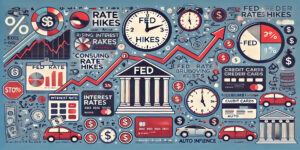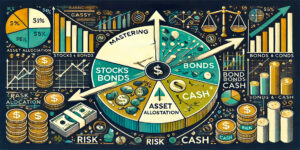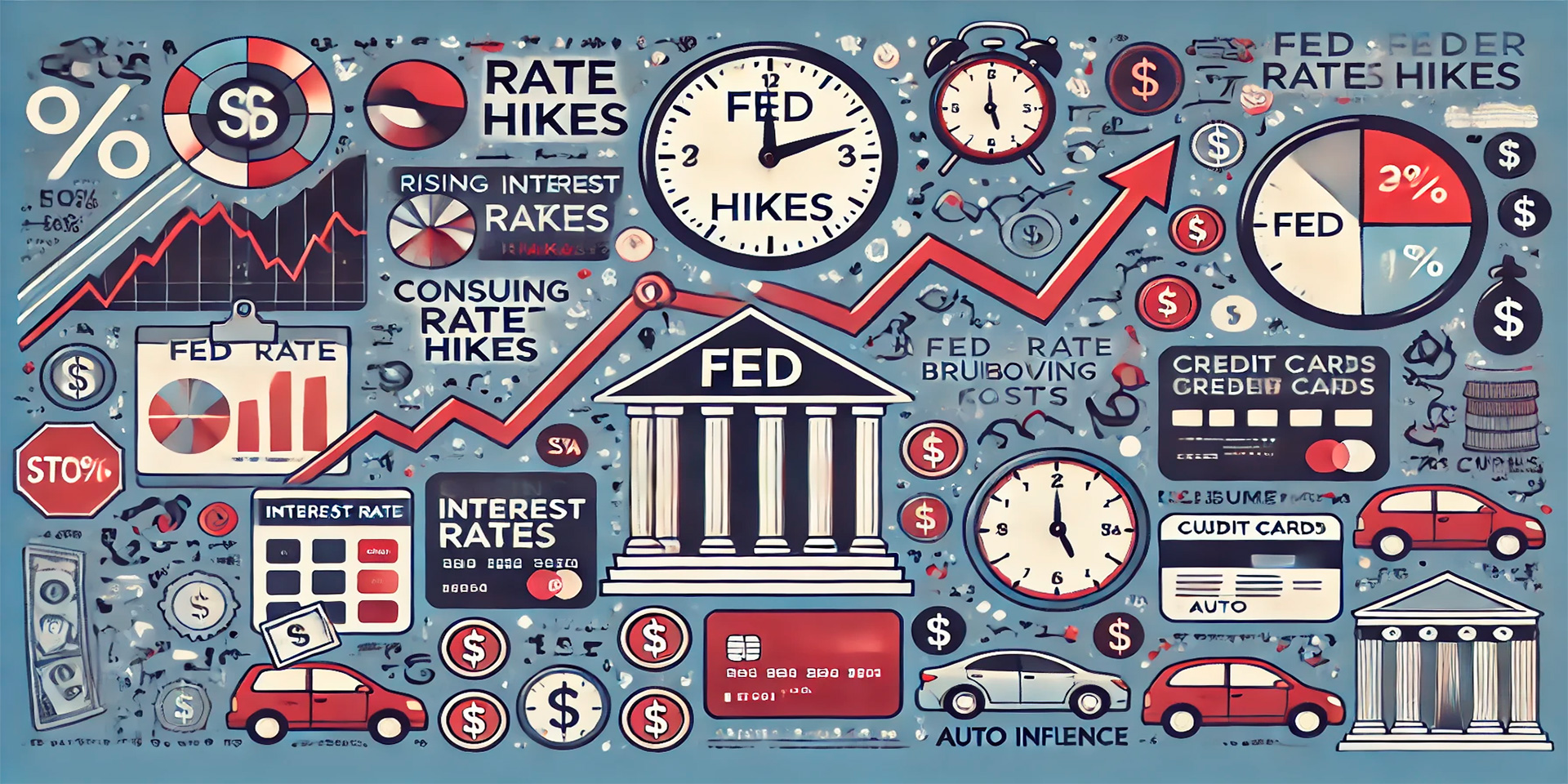
The Federal Reserve (Fed) plays a crucial role in shaping the U.S. economy, particularly through its control over the federal funds rate. When the Fed changes this rate, it has a direct impact on borrowing costs for consumers. From mortgages to credit cards and auto loans, the interest rates on various consumer loans can fluctuate in response to the Fed’s monetary policy decisions.
This article explores how changes in the Fed rate influence consumer loan interest rates and what that means for borrowers.
Understanding the Federal Funds Rate
The federal funds rate is the interest rate at which banks lend money to each other overnight. Although this rate doesn’t directly apply to consumer loans, it serves as a benchmark for other interest rates across the economy. When the Fed raises or lowers the federal funds rate, it indirectly influences the cost of borrowing for consumers and businesses alike.
The Fed uses changes in the federal funds rate to control inflation, manage economic growth, and stabilize the financial system. By raising rates, the Fed aims to slow down borrowing and spending, helping to cool off an overheated economy. Conversely, by lowering rates, the Fed encourages borrowing and investment, spurring economic growth.
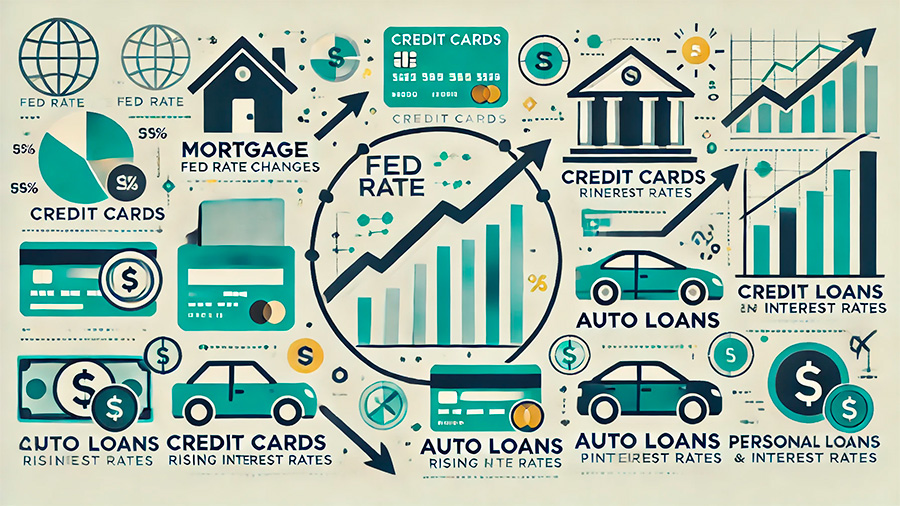
How Fed Rate Changes Affect Consumer Loans
Changes in the federal funds rate impact various consumer loans in different ways. Here’s how different types of loans are affected:
Mortgages: Mortgage rates, especially adjustable-rate mortgages (ARMs), are sensitive to changes in the federal funds rate. While fixed-rate mortgages are less directly affected, they can still rise or fall over time as lenders adjust to broader economic conditions. When the Fed raises rates, mortgage rates tend to increase, making it more expensive to buy a home. Lower rates, on the other hand, can lead to cheaper mortgages and refinancing opportunities for homeowners.
Credit cards: Most credit card interest rates are tied to the prime rate, which is influenced by the federal funds rate. When the Fed raises rates, credit card APRs (annual percentage rates) typically increase as well. This means carrying a balance on your credit card can become more expensive, resulting in higher monthly payments.
Auto loans: Auto loan rates are also linked to the Fed’s actions. While the impact may not be as immediate as with credit cards, consumers may see higher interest rates on new car loans when the Fed increases rates. Conversely, lower Fed rates can make it cheaper to finance a vehicle.
Personal loans: Similar to auto loans, personal loan rates are influenced by changes in the federal funds rate. A higher Fed rate can lead to more expensive personal loan options, while a lower rate can make borrowing more affordable for consumers looking to consolidate debt or finance large expenses.
The Ripple Effect of Fed Rate Changes
When the Fed adjusts its rate, the effects ripple throughout the economy. Lenders often react quickly to rate changes by adjusting the interest rates they charge borrowers. Here’s a closer look at how the ripple effect plays out across different areas:
Prime rate adjustments: The prime rate is the interest rate that banks offer to their most creditworthy customers. This rate is directly tied to the federal funds rate. When the Fed raises or lowers its rate, the prime rate typically follows suit, influencing many types of consumer loans, including credit cards and personal loans.
Savings and deposit rates: While higher Fed rates make borrowing more expensive, they can also lead to better returns on savings accounts and certificates of deposit (CDs). When the Fed raises rates, banks are likely to offer higher interest rates on savings products, which can benefit consumers looking to grow their savings.
Bond market impact: The bond market is highly sensitive to changes in interest rates. When the Fed raises rates, bond prices tend to fall, and yields rise. This can affect both borrowers and investors, as higher bond yields make borrowing more expensive while providing better returns for bondholders.
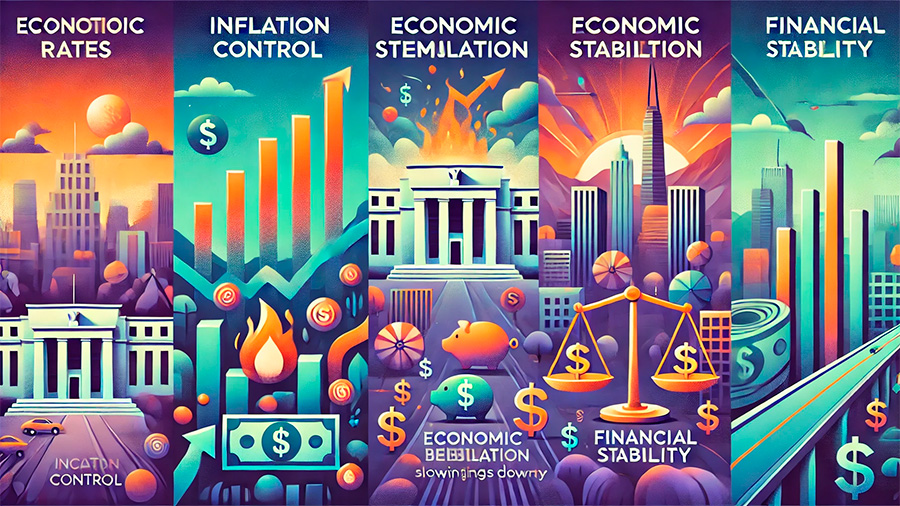
Why the Fed Raises or Lowers Rates
The Fed’s decision to raise or lower interest rates is based on its mandate to maintain stable prices, full employment, and moderate long-term interest rates. The Fed adjusts the federal funds rate in response to economic conditions, typically for one of the following reasons:
To control inflation: When inflation is rising too quickly, the Fed may raise rates to slow down borrowing and spending, which helps cool inflation. Higher interest rates make loans more expensive, which can reduce consumer demand and prevent the economy from overheating.
To stimulate the economy: During periods of economic downturn or recession, the Fed lowers rates to encourage borrowing and spending. Lower interest rates reduce the cost of loans, making it easier for consumers and businesses to access credit and invest in the economy.
To maintain financial stability: In times of financial stress, such as during the 2008 financial crisis or the COVID-19 pandemic, the Fed may take drastic measures, including cutting rates to near-zero levels, to prevent economic collapse and restore confidence in the financial system.
What to Expect as a Borrower
Understanding how the Fed’s rate changes impact consumer loans can help you make informed decisions about borrowing. Here are some key considerations:
Rising rates: If the Fed is raising rates, you can expect higher interest rates on new loans and existing variable-rate loans. This is a good time to pay down debt, especially credit card balances, to avoid increasing interest costs. You may also want to lock in a fixed-rate loan if you’re planning a major purchase, such as a home or vehicle, to avoid future rate hikes.
Falling rates: When the Fed lowers rates, it’s an opportunity to refinance existing loans at lower interest rates. Homeowners may benefit from refinancing their mortgage, and consumers with high-interest credit card debt may consider transferring balances to a card with a lower APR. Additionally, new loan opportunities, such as auto loans or personal loans, become more affordable during periods of lower rates.
Conclusion
The Fed’s interest rate decisions have a direct impact on consumer loan interest rates, affecting everything from mortgages and credit cards to auto loans and personal loans. By understanding how changes in the federal funds rate influence borrowing costs, consumers can make smarter decisions about managing debt and taking advantage of opportunities when rates are favorable. Whether rates are rising or falling, staying informed about the Fed’s actions allows you to navigate the lending landscape more effectively.


